See How a Wild, Wet Winter Has Transformed California
California is drenched.
Thanks to a season full of record-breaking and dangerous precipitation—including 12 atmospheric rivers, the latest of which hit the state on Tuesday—the state is wetter than it’s been in months, following a summer of extreme drought conditions that left reservoirs at historic lows, killed millions of trees, caused officials to impose water restrictions, slashed hydropower output, and created an agricultural crisis.
Read more
These Winning Close-Up Photos Show Life That's Often Overlooked
Remembering Enterprise: The Test Shuttle That Never Flew to Space
As of March 16, the U.S. Drought Monitor showed that just under 9% of California was in severe drought, while more than 44% was experiencing no drought conditions at all. It’s a sharp contrast from the start of the water year in September, when more than 40% of the state was in extreme drought and more than 16% was in exceptional drought—the highest level on the Drought Monitor scale. This February, the state’s snowpack clocked an astounding 200% above normal, its highest level in decades for that time of year, while Southern California experienced a rare blizzard warning.
It’s normal for water conditions in California to fluctuate like this, and it’s usual for snowfall and rain to accumulate and fill up reservoirs and replenish lakes and rivers around this time. But some recent “wet” seasons have been worryingly warm and dry. Last year was one of the driest winters on record for California, and the season ended with a near-nonexistent snowpack measurement and snow levels at 38% of normal around the state.
After a summer of water stresses, it may be tempting to breathe a sigh of relief. But a winter full of snow and rain hardly means that the state’s long-term water woes are solved.
“The water issues haven’t gone away,” Jay Lund, vice director of the Center for Watershed Sciences at the University of California, Davis, told the New York Times. “They’re just taking more of a backseat.”
In fact, this intense swing between dry and wet conditions is part of a “weather whiplash” the West is experiencing thanks to climate change. Rising temperatures due to emissions are projected to significantly increase both the severity of droughts and the intensity of precipitation. As the impacts of a warming planet get more and more extreme, places like California will continue to ricochet between dangerously intense storms and bone-dry drought.
These before-and-after photos show just how much the state’s situation has changed in a short period of time.
LA Cityscape
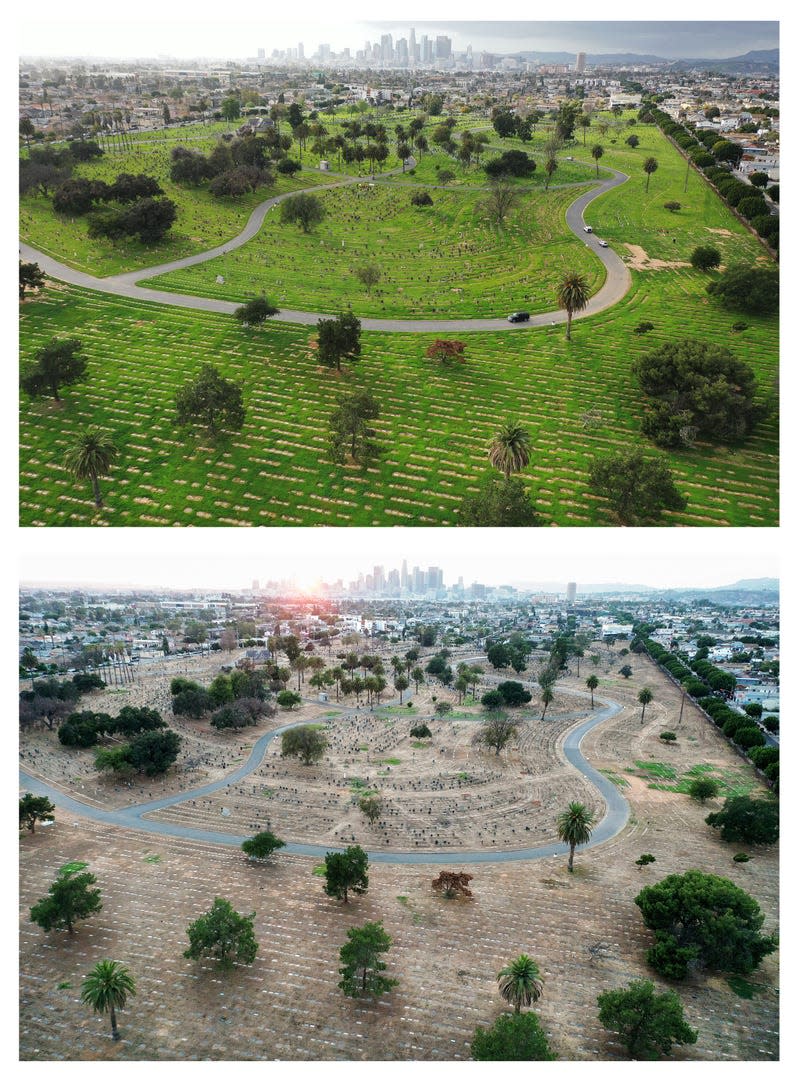
Wildfire Scars at Lake Oroville
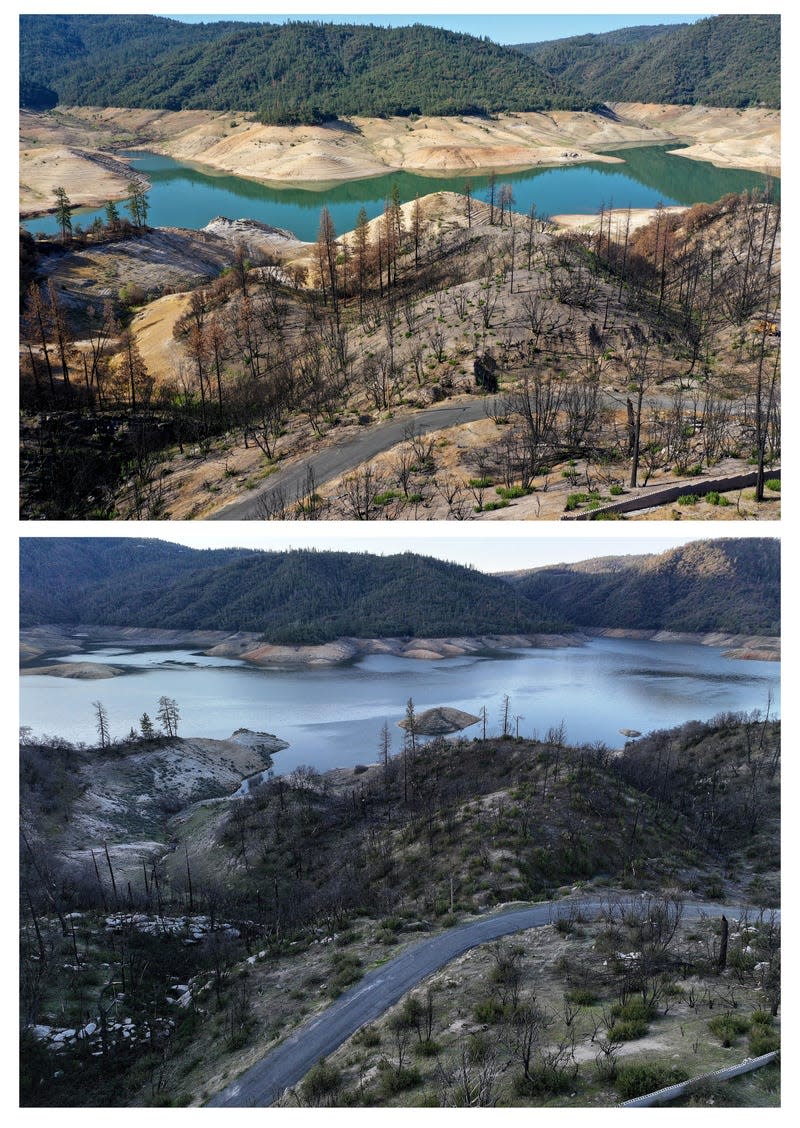
Houseboats at Lake Oroville
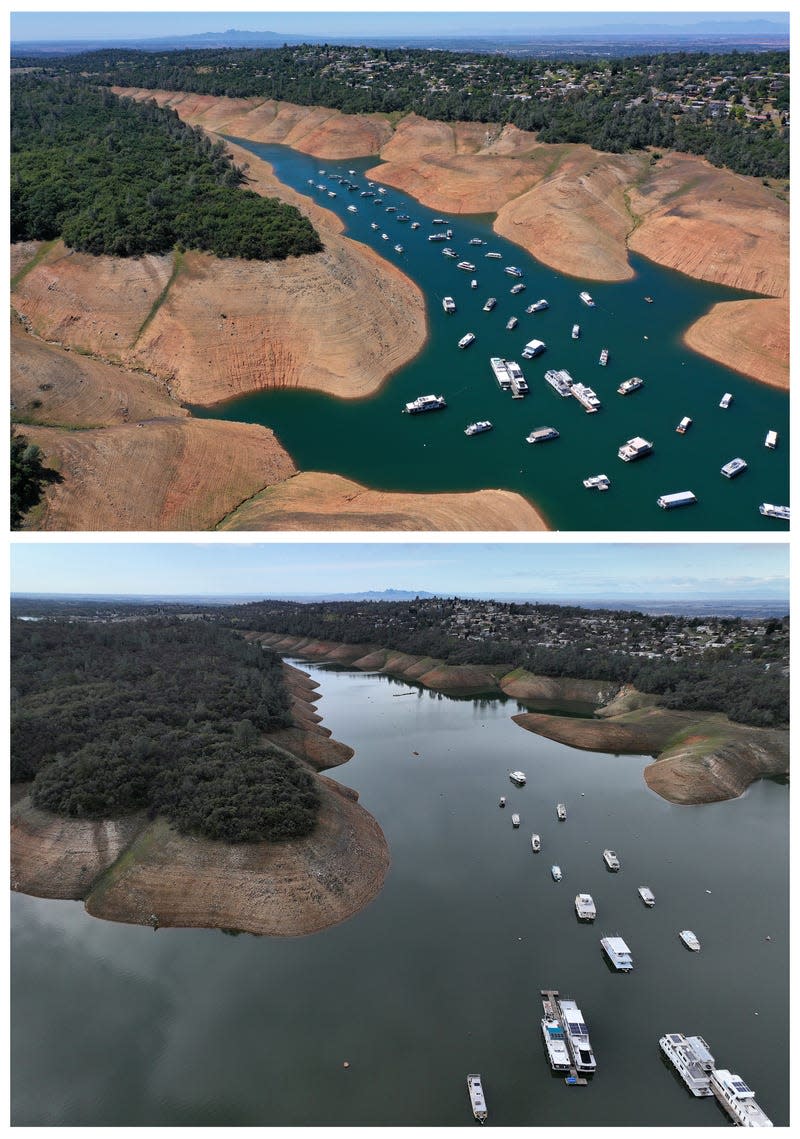
Bidwell Bar Bridge, Lake Oroville
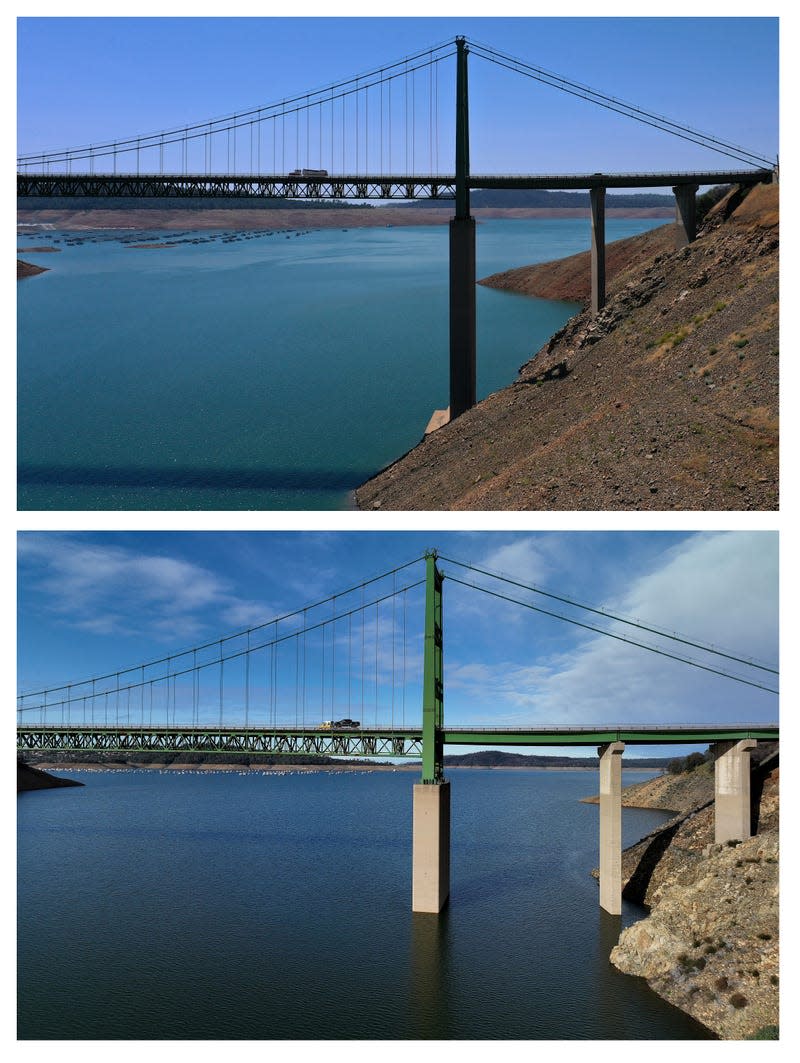
Edward Hyatt Power Plant, Lake Oroville
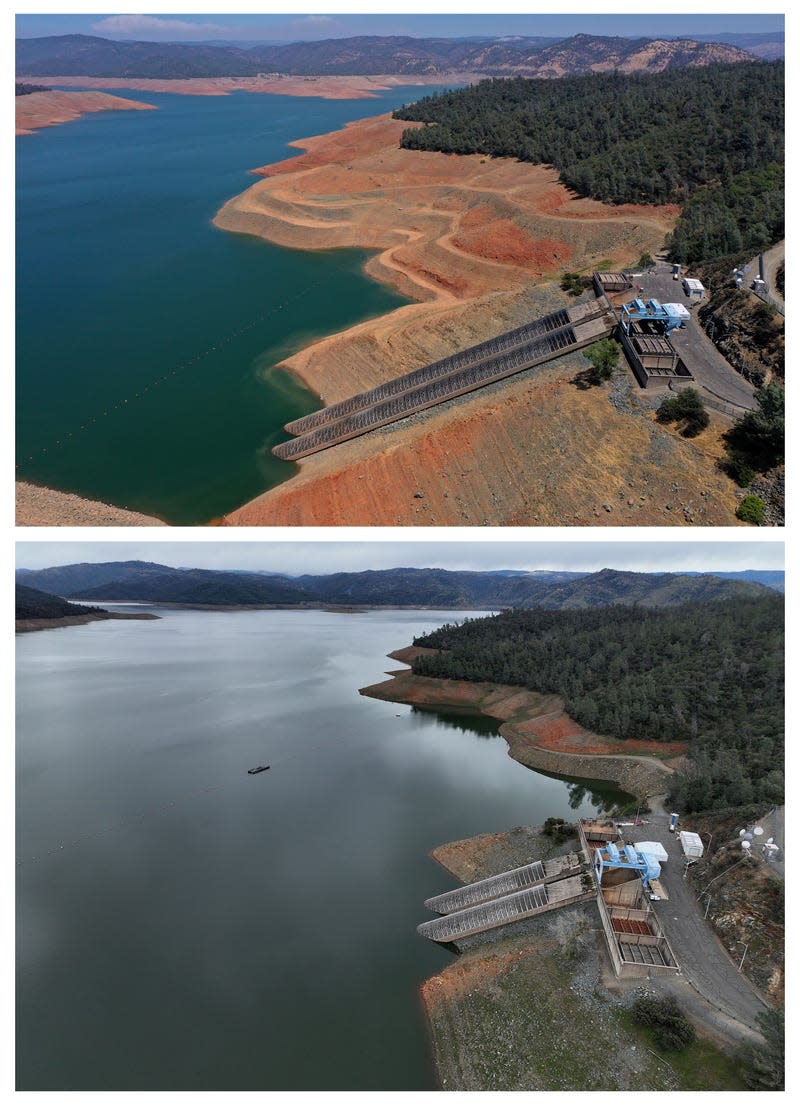
Evergreen Cemetery

Enterprise Bridge, Lake Oroville
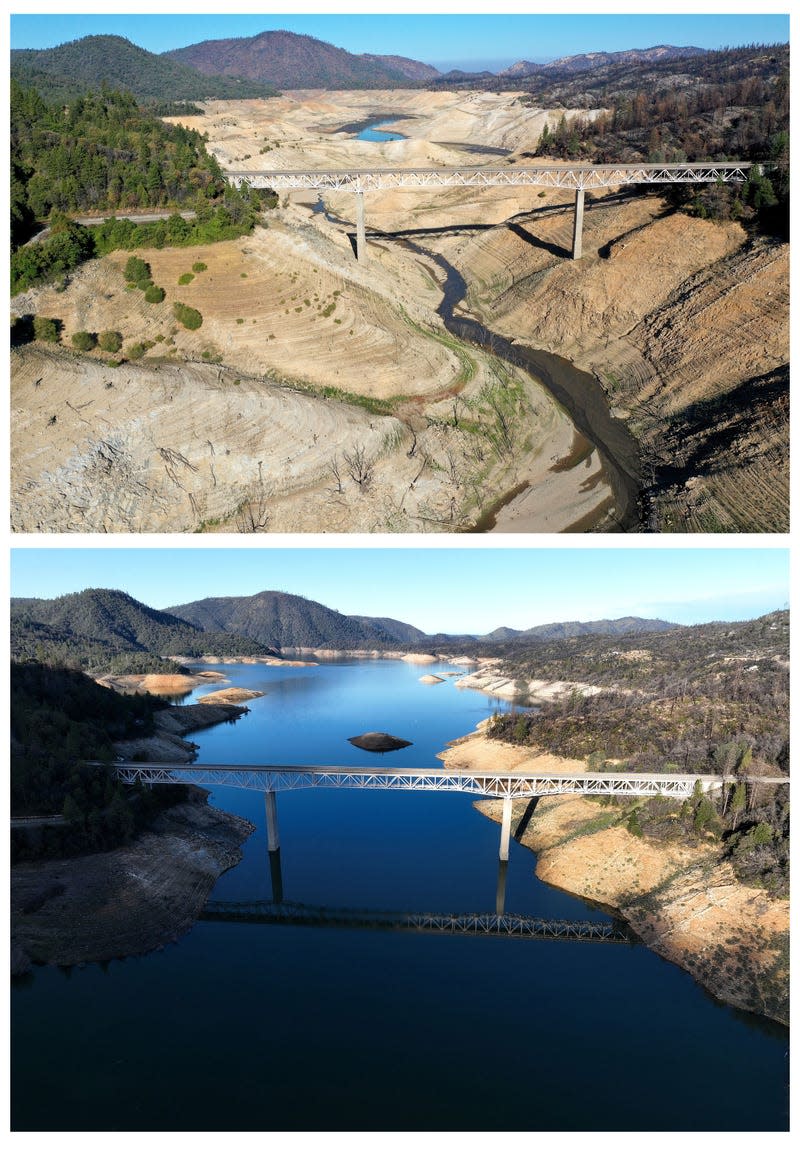
Ramp on Lake Oroville
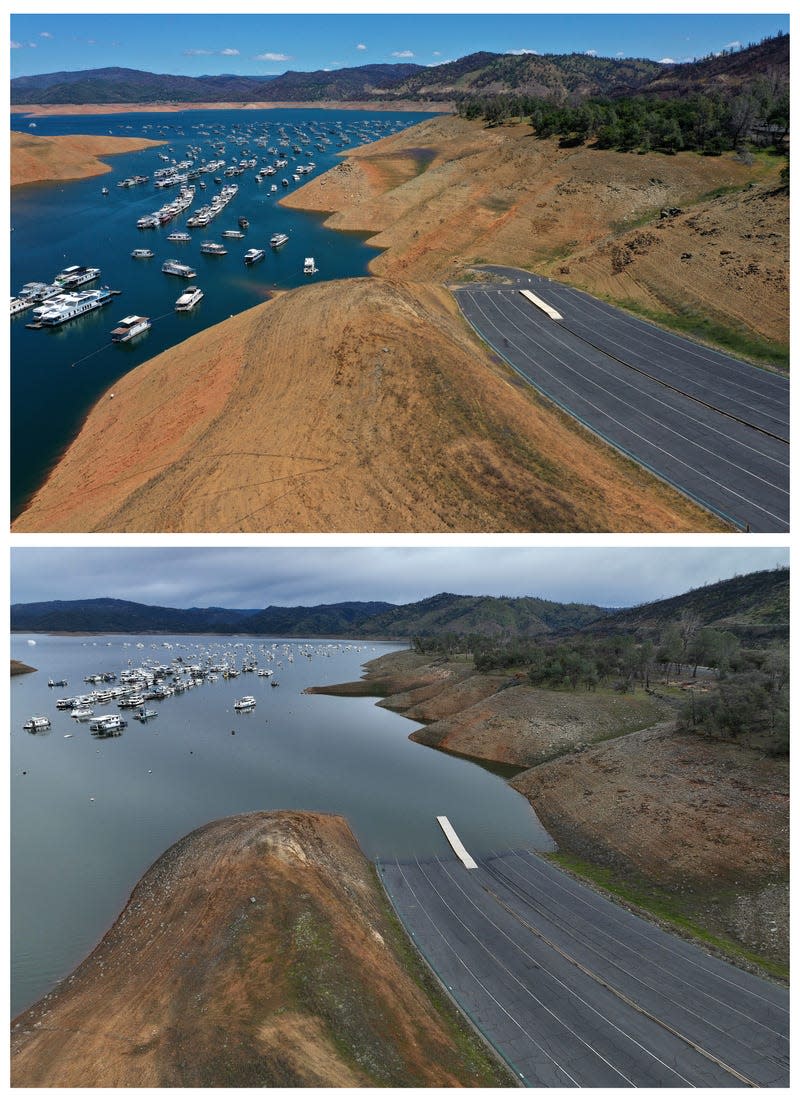
More from Gizmodo
Sign up for Gizmodo's Newsletter. For the latest news, Facebook, Twitter and Instagram.

